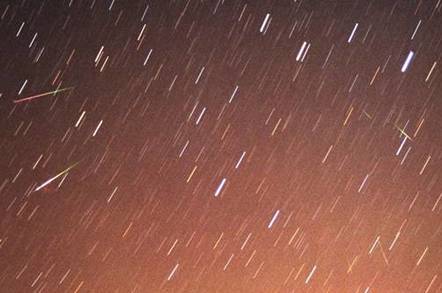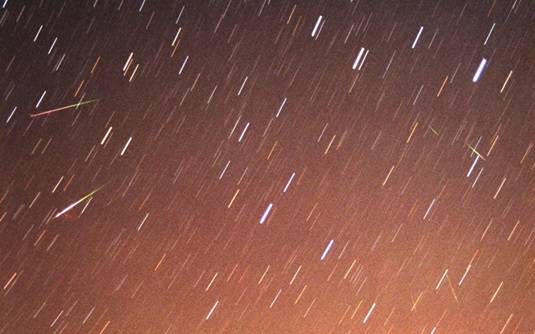It's space WAR: Comet launches fireballs at space-invading EARTH
Rock allegedly furious at humans, 'coming over here, invading our land with probes'

Pic Early-bird skywatchers in the US are in for a treat this week: the annual Leonid meteor shower starts just after midnight and will peak just before dawn on Tuesday.

If you wish upon a star...
"We're predicting 10 to 15 meteors per hour," said Bill Cooke of the Meteoroid Environment Office at NASA’s Marshall Space Flight Center. "For best viewing, wait until after midnight on November 18, with the peak of the shower occurring just before sunrise."
The Leonid shower occurs as the Earth swings through the debris stream left by Comet 55P/Tempel-Tuttle, which swings through our Solar System every 33 years. The comet, which is more than three kilometers wide, leaves a field of material in the path of Earth's solar orbit, and the qualities of this matter makes the Leonids a favorite among astronomers.
Incidentally, the shower comes just days after the European Space Agency invaded Comet 67/P, a rock some 500 million kilometers from Earth. The Earthling lander probe Philae was eventually thwarted, for now, by its reliance on solar power.
Now space is biting back, and Tempel-Tuttle is not a comet to be trifled with; it is renowned for spewing two types of stuff to burn up in our atmosphere: fireballs and Earth-grazer meteors. Fireballs are larger chunks of space rock that explode in light and color that are much brighter than standard meteorites, while Earth-grazers come into our atmosphere at fast, low angles that leave them streaming long tails as they burn up.
For the best viewing angle, face the night sky's eastern quadrant and look towards the constellation of Leo, from which the harmless shower gets its name. After around 30 minutes human eyes will accustom themselves to the dark and the shower should be clearly visible.
Those unwilling to sit outside in the chilly darkness of a November night for their light show can still see the action from the comfort of their own homes, however. NASA is live-streaming footage of the comet shower, online, from a telescope at Marshall Space Flight Center from 1830 CST (0030am UTC). ®








 User Center
User Center My Training Class
My Training Class Feedback
Feedback











